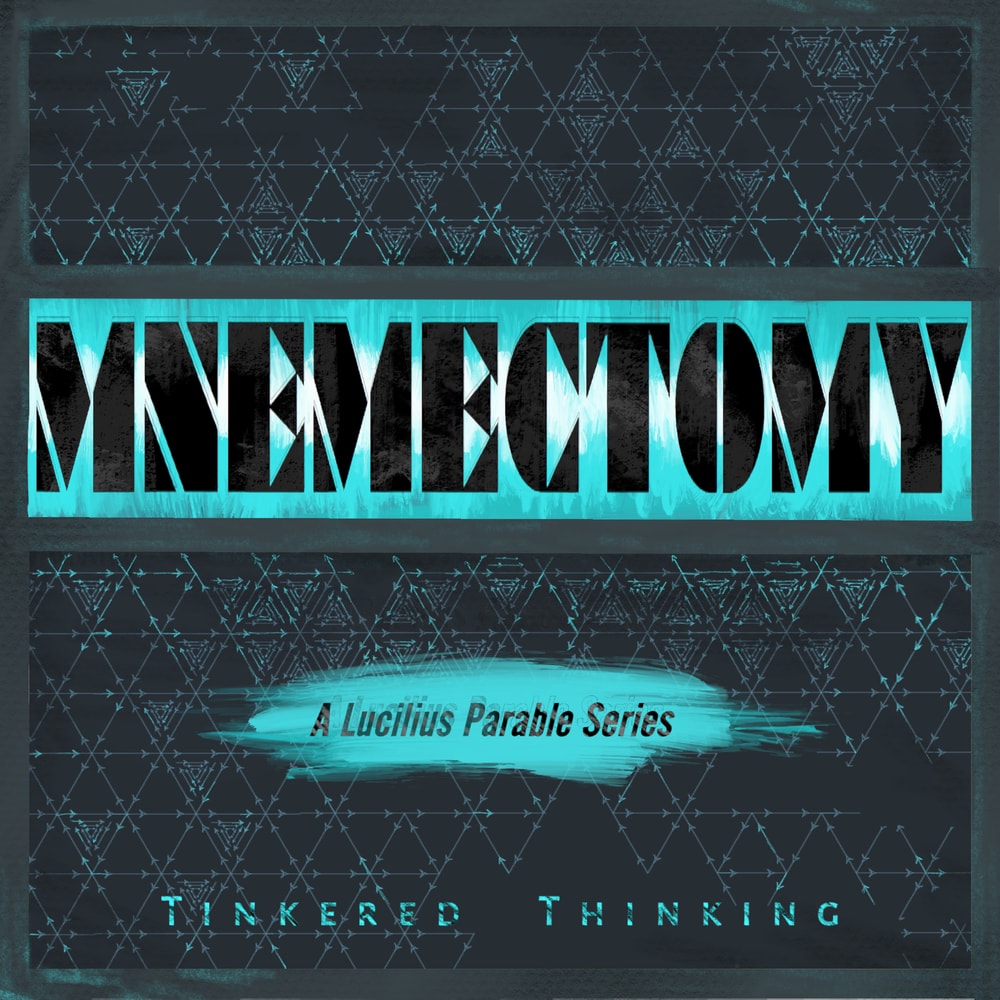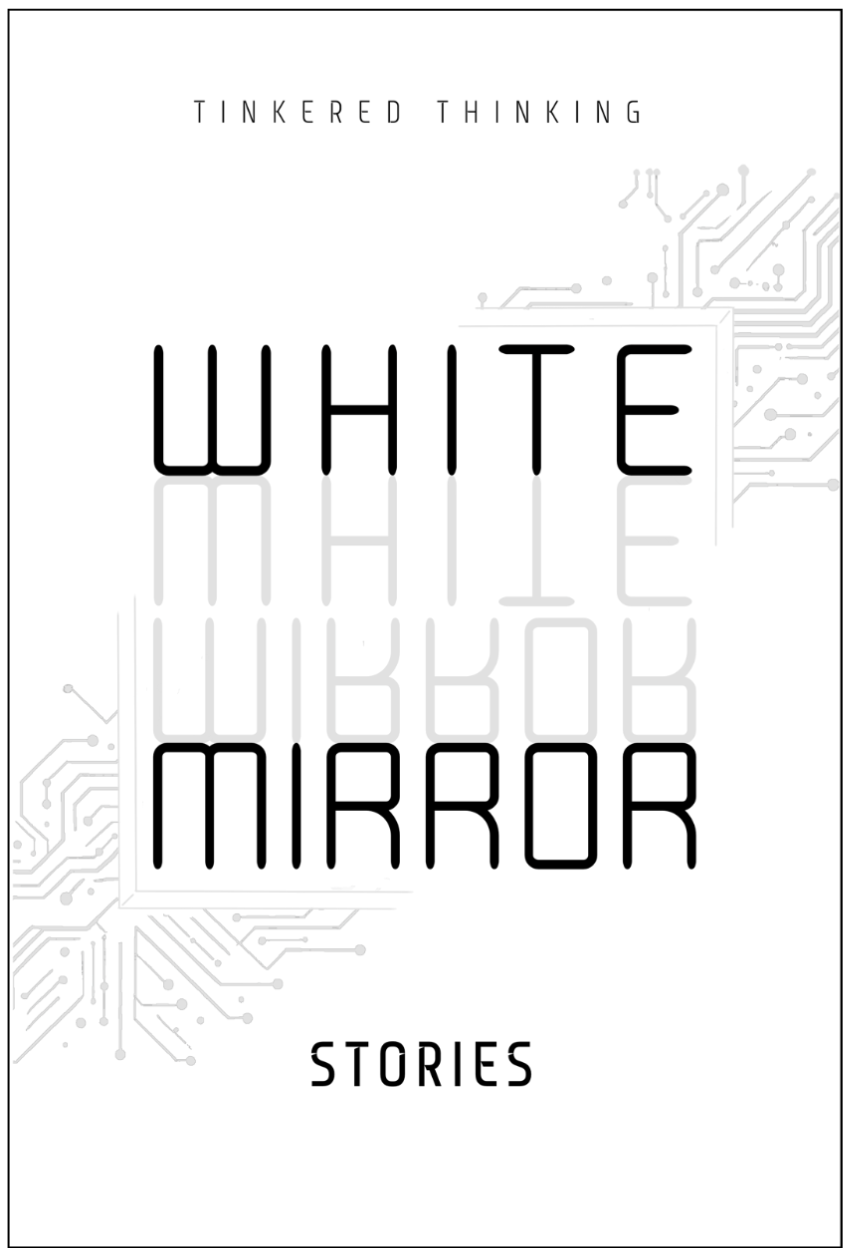Daily, snackable writings to spur changes in thinking.
Building a blueprint for a better brain by tinkering with the code.
subscribe
rss Feeds
SPIN CHESS
A Chess app from Tinkered Thinking featuring a variant of chess that bridges all skill levels!
REPAUSE
A meditation app is forthcoming. Stay Tuned.
THE DEAL WITH CURRENT EVENTS
April 2nd, 2021
Trends in communal attention are almost always the result of a conceptual microscope being placed upon an issue at the exclusion of proportion to other issues. This is not to say that some issues don’t need a bit more focus and attention in order to make things better, but that the weight of communal attention always risks an over-reaction that misses the goal: much like an elephant stepping on a lop-sided toy boat in an effort to right it. The chances that toy boat gets crushed, or simply perverted by now tilting in the exact opposite direction is huge. In fact, those chances are probably relative to the size of the crowd gunning for the change.
We do the same thing on an individual level. We ruminate on a topic, allowing the same feelings and thought to engrain repetitively until it’s blown out of proportion and we are far more worried about some innocuous issue than we need to be. We are each more than familiar with this personal phenomenon. How on Earth would such a phenomenon keep in check when multiplied across hundreds of thousands of people, all equipped with the same attentional microscope?
Emotions enlarge when shared. The power of communal feeling creates a tremendous degree of salience which can and often does push people to take action that feels equivalent to that degree of salience. This is how buildings that are totally unrelated to an issue get burned down. This is how the results of the action we take can actually be completely at odds with an actual solution and even exacerbate the issue at hand that we are trying to remedy.
Emotions are the primary fuel for people, help on a ton of emotion, and chances are, there will be a proportional amount of action. Now enters the real problem: is the emotion in proportion to the problem? How can we ever be sure? Especially when the size and intensity of emotion is so variable, and so likely to accelerate when it becomes shared among more and more people?
There is a clean view of reality that would place every conceivable issue on a hierarchical list that ranks every human issue in proportion to others in accordance to our communal long term goals and ranked by statistical likelihood of jeopardizing our long term goals. Such goals would be the unarguable hopes that are shared by virtually everyone: the wish that our species continues through time, that our experience of that time improves, et cetera. But of course this list is a fantasy. Such a list would instantly be invalidated when someone sees an issue with a specific ranking that they disagree with. Attention is a finite and narrow resource, and it’s impossible to hold too many issues in mind simultaneously. Because of this, we would each see an issue on the list that has a lot of personal salience and feel that most if not everything ranking above it doesn’t matter as much. This is exactly what happens with “current events”. What happens this coming Monday or this morning often highlights something on our list of communal priorities. It becomes “THE” issue, as though it floats straight to the top. Does this mean that it should be the top issue? No, not at all. It just means that we’re simply all focused on it. It becomes “The Obvious Choice”.
It’s worthy to note that the etymology for the word ‘obvious’ derives from ‘frequently encountered’. This means that ‘the obvious choice’ bares no real relation to the concept of the ‘right choice’ it’s just the issue that we see the most, and this happens almost exclusively because everyone else is talking about the issue which makes it pop up in virtually every avenue of life that we interact with short of going for a hike in the woods alone.
‘Current Events’ and the dialogue that orbits such instances bare more resemblance to bouts of hysteria than it does some effective avenue toward progress and meaningful change. Those last two golden eggs often occur quietly and slowly. What is loud and feverish among groups rarely burns away the problem that everyone is squawking about. If anything, intensity of emotion, on an individual level and a group level makes clear thinking less possible, and because of this, individuals and groups can be steered somewhat mindlessly toward targets held in mind by calmly malicious actors who see the angry mob and simply point at the store front.
The wild disparity that often accompanies the feelings around current events and the actual issue is the fundamental reason why Tinkered Thinking avoids current events as a rule. Beneath the fickle and polar swing of communal attention resides a stronger, subtler current of human functioning, and it’s this current that Tinkered Thinking is constantly trying to tap into and explore. To be swept up by the river of emotion that changes course through human attention nearly every day is to lose sight of the river itself. We risk getting trapped in eddies of repetitive thought, bickering about one tiny nook in the river instead of focusing on where exactly the river is headed beyond it’s many twists and turns..
DISARMING EXPECTATION
April 1st, 2021
There is an anxiety intrinsic to expectation. Even when the expectation is for something positive, the experience is most often coupled with a nervousness. When the outcome is positive we generally say ‘excited’ instead of ‘nervous’ but the two indicate the same sort of salience, regardless of flavor.
The apprehensive quality of expectation carries with it a kind of resistance. Something has seized our sense of being, and the anxiety or excitement results from a subtle reluctance. But reluctance to what? The future? The inevitable object we dread or eagerly await? Certainly in the negative version of the situation the reluctance makes sense, but is it also appropriate to dread what you eagerly await?
The most straightforward explanation for dreading the positive would be a fear that it might not happen, or it might not happen in just the way we imagine. Both are reasonable ways to poison the good things we look forward to, but there is perhaps something a bit more subtle at play, something inherent in expectation that is not so straightforward, something that does not discriminate between good and bad things that the future holds.
Expectation is a mutation of the present. It’s a conceptual realm that is divorced from the here and now. Positive or negative, we disservice ourselves from the process that brings about these outcomes that we either dread or hunger for. It’s a bit like dazing off into space thinking about how proud you’ll be when your child graduates and in that state you completely miss the instance when they take their first steps.
So what is to be done? Never think about the future? Certainly not. Mental health rarely lies in a pendulum swing to the other side of an extreme. Planning for the future is a wise necessity, and the trick is to be present and plan for the future. The point here is simply that we devote far too much time and thought to the future at the expense of what is going on right now, even when the future seems bright. The antidote to expectation is a surrender to the process of the moment.
DISSONANT THOUGHT
March 31st, 2021
With all due respect and reverence for children, at the end of the day, they can be a bit of a nag. Any parent, teacher, or babysitter knows this. At the end of the day, often what a child most wants, and often needs is, some attention. If you’ve ever had your name on repeat in the mouth of a toddler, you’re probably familiar with the experience of finally turning to that toddler in the midst of other chaos to finally give them their due turn, only to find out that they don’t actually have anything to say or show you. They just wanted you to focus on them for a moment. And of course there’s nothing wrong with this, it’s healthy and important, and not all shared attention between people needs some tertiary object of discussion or interest. Sometimes we just need some company and the acknowledgement that, hey, we’re both here right now.
Thoughts are a bit like children. They pop up, seemingly out of nowhere, and often with less than ideal timing. Dissonant thoughts in particular can hang around, as though carved into the vinyl of a broken record played by the mind’s gramophone. And they continue to stick around, like a child with a distracted parent’s name on repeat.
Often the thought, just like the child simply needs to be acknowledged. For whatever distracted reason, however, we seem unfortunately adept at bearing the buzz of an uncomfortable thought that hovers just on the edge of consciousness.
Much of meditation is simply dealing with this unholy queue and orbit of nagging thoughts. It’s much like having a long line of children that are all vying for your attention. You have to give each kid their due and sometimes, finally, you get to the end of the line. By acknowledging each thought, each lingering worry and consideration, the end finally comes and there’s a brief respite before the swirl of life generates more. For a brief moment there is no dissonance, and the mind is at peace with itself.
At this point in the description it might seem that we are each just unlucky factory workers in the production of thoughts. But, like creatives, writers, and even miners, it’s necessary to go through a lot of useless material in order to get something good, and this is the most important detail. Some dissonant thoughts really do need a bit more than simple attention. They require thoughtful consideration, planning, strategy and most importantly, action.
What’s odd though is that there crucially dissonant thoughts don’t necessarily have automatic salience above and beyond other dissonant thoughts that are of little consequence. The mind can fail to highlight what is important due to the fog of dissonance it’s swimming around in. Sometimes you don’t realize how important an issue is until you’ve productively moved through a few meaningless ones that were somehow in the way.
These dissonant thoughts that are truly concerning are perhaps our brain’s most productive function, as least from a personal and subjective standpoint. These crucial dissonances lay out the stepping stones to a better life. We improve our experience not by adding things, but in this case finding solutions that remove such dissonant thoughts. For example, an ambient stress about a financial situation requires real planning, thoughtful action, and hard work.
The true value of a clear mind at peace is that it creates a clean and present space for problems to be effectively recognized, analyzed and solved. Many people suffer simply because they are working very hard on the wrong problems, which are often a proxy for real productivity when overwhelmed with a menagerie of mental dissonance. Clearing the clutter of the mind smoothes the path towards the real problems of one’s life.
RATIO OF ATTENTION
March 30th, 2021
Attention is a subtle subject, which is to say that it’s either too complex to accurately describe or our knowledge of the subject is too lacking for any such description. This is merely to preface a musing about attention with the fact that we haven’t nailed down any hard truths. But in order to make any headway, we first need an idea to work with, a figment of the imagination that we can rub up against reality and try to falsify.
One conjecture about attention that seems to have some ground within the current state of the thought is that our attention is two fold. We can’t actually multi-task as some very inefficient people might claim, but we can handle two tasks quite well. Like holding a conversation while driving a car. We cannot however, drive a car, have a conversation and write an email, for example.
If for a moment we take the premise that we have two attentional avenues as true, what exactly might these two attentional avenues look like? How do they differ and in what ways are they similar?
Attention, is a state of context. It’s defined primarily by what is within it’s scope. When a teacher snaps in the direction of a student and says “pay attention” that teacher is prompting the student to switch context - to abandon what is in the student’s current context and replace that object or objects with that of the teacher, and the subject being taught.
With the conversation in the car, one attentional field is quite expansive, noting what is behind the car via mirror, the shape of road up ahead and of course other cars. The other attentional field is focused just on the words of the conversation, the phrasing, the rhythm and tone of the person’s voice. In this case the context is much smaller and the objects of focus are far fewer.
Iain McGilchrist in his book “The Master and his Emissary” holds that these two attentional fields have just that ratio: one is focused on the bigger picture and the other is narrowly focused on specific details.
McGilchrist doesn’t vary too much from this position, but what if the ration of scale between these two attentional forms changes? Certainly any ratio comparison between two things of different size pretty much means that one will always be bigger and the other smaller, but what if instead of one attentional avenue being chronically stuck with the aperture wide open and the other tuned in like a microscope, what if they can toggle to intermediary sizes? What if we can be focused simultaneously on two similarly sized contexts?
An example might be playing a piano song. One attentional avenue may be concerned with the accuracy and timing of each note, and another is focused on the overall feel and sound of the whole song. Certainly something like this must be the case if we do in fact have two attentional fields since a person can get “lost” in the act of playing and therefore isn’t paying attention to what’s going on in the room. But then again this begs the question of whether there are in fact multiple attentional avenues at play in the first place. Who’s to say there isn’t just one?
If there are two attentional avenues and if their scope and context is a ratio that can change, is there a benefit or danger with a close ratio? What about a highly unbalanced one?
There are some aphorisms that point at an answer.
Can’t see the forest for the trees. Is one.
Another is: penny wise, pound foolish.
Both of these attempt to convey the danger of focusing on details at the expense of the larger picture. It’s a bit like telling someone to not look at their feet as they walk, but instead to look ahead for that cliff you’re about to walk off.
We’re all quite aware of how important it is to keep the bigger picture in mind, despite how bad we actually are at it. Hence the aphorisms. It seems we feel we need the constant reminder.
That being said, getting anything done inevitably requires an attention to detail. Any accomplishment, no matter how big really just boils down to the execution of innumerable tiny tasks, which of course reside in a small and narrow context.
The ratio of attention we seem best to shoot for is a highly imbalanced one: Keep your eye on the price, but make sure you take care of the details as you go.
This might mean that we risk something important when we fail to stretch our attentional avenues as far away from one another in scope as possible. The more that ratio approaches a one to one relationship, the more our dual powers risk reducing to the functioning power of just one power. Perspective becomes stiff and homogeneous, making it harder to change, being blind to other possible directions that would be obvious with a larger perspective.
Although there’s still as of yet so much to be determined regarding the nature of attention, it’s clear that at least within this framework, the greater the ratio, the better. But regardless, this is just one small hypothetical detail in a large emerging field.
TINKERED THINKING IS FAKE
March 29th, 2021
Recently, Tinkered Thinking made a change. If you only read the platform then you probably haven’t noticed, but if you listen, chances are you’ve picked up on something different. Yes, Tinkered Thinking has outsourced the recording of podcast episodes. Sort of. It’s still the same voice, but it’s no longer me reading episodes.
You may have recently seen videos of Tom Cruise which are not actually videos of Tom Cruise. These are so called ‘deep fakes’ which use a variety of machine learning techniques to generate hyper-realistic video and audio. Tinkered Thinking has begun to employ something similar, though not as perfectly effective.
First, a small confession: I, the creator of Tinkered Thinking, absolutely detest recording episodes. In the beginning it was merely difficult and I figured like most things I would get fairly good at it and find a way to enjoy it as a kind of practice. As luck would have it, or rather not have it, I haven’t improved much in my ability to read and record. I still make loads of mistakes that have to be edited out, and the entire process lacks all sense of satisfaction and fulfillment that comes with other things, like writing everyday, for example.
So, when the discovery came about that it’s possible to deep fake your own voice, and then simply plop a transcript into a program that then uses a machine voice to create pretty decent simulacrum, I couldn’t resist. This required reading a half hour of Planet Earth script which is then used to train the machine on the sound of my voice. Considering the cost and the ease and good fidelity of result, I couldn’t pass up on the use of this tool. Granted, it isn’t perfect. It’s certainly robotic, and it lacks some nuance about exactly how some things should be intoned.
If Tinkered Thinking had more audience support then I would consider continuing recording episodes myself, but alas Tinkered Thinking is still just a little hobby project. One that I certainly want to continue. And in light of that fact, if you would like to support Tinkered Thinking you can do so on the support page. In the meantime, while the Tinkered Thinking audience and income is still relatively small, this machine voice offers a substantial improvement for insuring that Tinkered Thinking continues: it makes the production of the podcast far less time consuming and to be perfectly honest, the whole project is more enjoyable with the removal of it’s most unpleasant thorn. This is on top of the fact that Tinkered Thinking is just a side project, and my main focus independent of Tinkered Thinking is ramping up into what will probably be a very busy year. This technology offers an edge against being busy: the chances that I can keep up with the project are higher if I can get it done quicker.
There’s also the consideration that this deep fake technology which Tinkered Thinking uses will certainly get better. It’s doubtful that it won’t improve to the point where I wouldn’t even be able to tell the difference between an episode I personally record, and one generated by a more advanced deep fake version of my voice.
The particular technology being used here is a program called Descript, and the feature is called Overdub. It’s improved quite a bit in just a year, to the point where it makes sense to actually use it, and everything points toward it getting even better.
If you truly can’t stand the change, feel free to reach out on Twitter, and I’ll be happy to discuss it further. Though, if you aren’t one of the platform’s generous and treasured supporters, I can’t promise your argument will land with as much emphasis as you might hope. Surely anyone can understand why.
At the very least, though the result might not be perfect, it is pretty cool regardless. It’s a perennial wish among so many people to have clones of ourselves so we can get more done and enjoy more of the various facets of life. Well, we now live in a time where we can get a taste of that and outsource some of the less fulfilling work to a digital version of ourselves.
As a final note, Tinkered Thinking will still continue to record the weekly Lucilius Parables since the machine voice is particularly inept with the vicissitudes of fiction, not to mention that those episodes are actually kind of fun to record.
-compressed.jpg)





